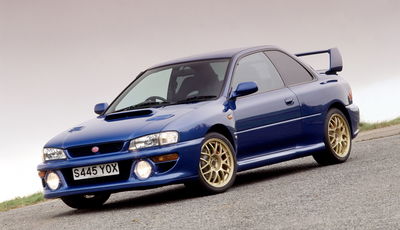What Is A Kei Car?

Kei cars are one of the most uniquely Japanese slices of the motoring world. These dinky cars symbolise the country’s ability to make very effective use of small spaces – tiny in stature, big in utility and just the right amount of weird.
What exactly makes a Kei car, though, and why haven’t other countries copied them? We explain.
What exactly makes a Kei car?

‘Small and Japanese’ isn’t simply enough to make a car a Kei car, there are specific regulations for the term.
Those have been revised through the years but the existing ruleset has been in place since 1998 and seem unlikely to change anytime soon.
By law, a Kei car must be no longer than 3.4m, no wider than 1.48m and no taller than 2m. Engines cannot be any larger than 660cc and, though there’s no official law limiting power, a ‘Gentleman’s agreement’ exists to keep official figures capped at 63bhp.
That is separate from the more commonly known Japanese Gentleman’s Agreement that disappeared in the ‘00s, in case you wondered.
What’s the point?

Well, from a consumer perspective, they’re really small. Japan is an extremely dense country with around 875 people per square mile – for some context, that’s 720 in the UK and only 98 in the US. With that in mind, making the most of relatively small areas is crucial.
There are also tax benefits. First of all, Kei cars are taxed at a lower percentage of their list price compared with regular cars at the point of purchase. From then on, taxes based on engine displacement (naturally, cheaper for a 660cc unit than most production cars) and a vehicle’s weight (Kei cars do not weigh much) make them more cost-effective to run.
Oh, and bonus fact: to register a normal car in Japan, you need evidence you have somewhere at home to park it. You don’t need that for a Kei car.
Are they popular?
Yes, extremely. In 2024, about 1.2 million new Kei cars were sold in Japan throughout the year – equating to just shy of a third of all new passenger car sales.
Which Kei cars should I have heard of?

Most Kei cars are going to be alien to use, given they’re a Japan-only thing. However, some have escaped the land of the rising sun and into the consciousness of petrolheads worldwide. Thanks, Gran Turismo.
The big hitters are the Suzuki Cappuccino, Honda Beat and Autozam AZ-1. Like the hypercar Holy Trinity, only way smaller and arguably cooler.
Some have made their way to other markets, although given Japan uses right-hand drive, not too many. What a great day to be in the UK.
We’ve officially had a few Kei cars on our shores, like the aforementioned Cappuccino plus the Daihatsu Copen. Oh, and Caterham sells a Kei-spec Seven here too, in case you didn’t know (granted, with more power for us).
Why haven’t other countries copied Kei cars?

Great question. We don’t really know why they hadn’t caught on decades ago, to be honest – they’re a wonderful idea.
The most obvious stumbling block is consumer demand in today’s world. Given the general trend towards buying bigger cars with more power and less space than you’d think, the Kei car seems the antithesis of what those of us in the Western world spend money on.
There is also safety to consider. Although modern Kei cars are pretty close in safety standards to cars much larger than them, laws of physics dictate circa-800kg boxes are going to have A Bad Time™ against the big SUVs and crossovers most people are driving around today.
Without Kei car culture entrenched in our lives in the same way they have been in Japan since the ‘50s, it’d be hard to see them become widespread today. For that, we are regretful.















Comments
No comments found.